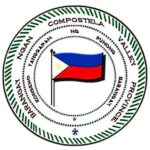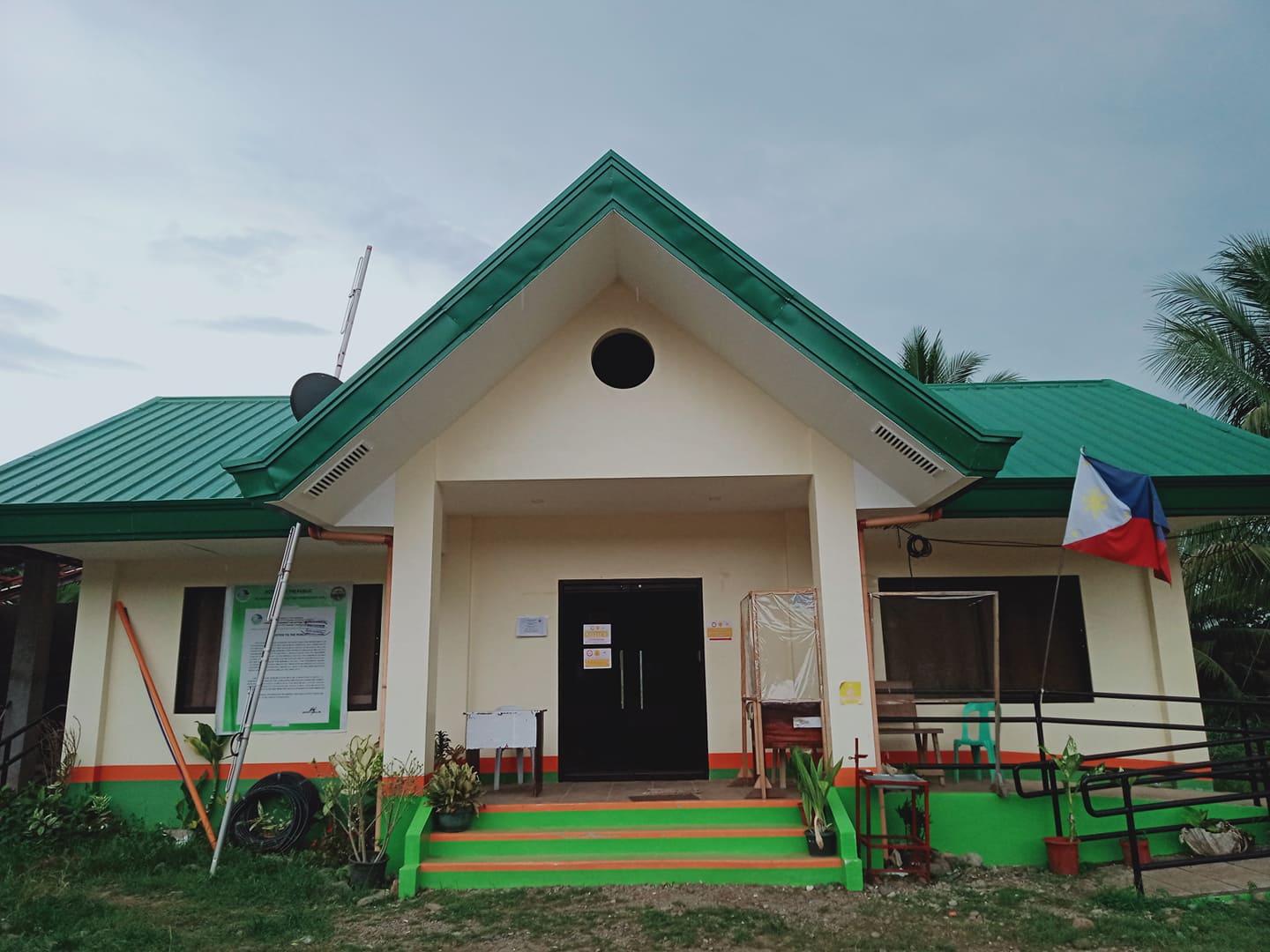NGAN
Barangay Ngan is named after a major river traversing between Barangay Ngan and Barangay Tamia, serving as its political boundary. Ngan with native translation as “pangan or ngalan” in English as name of someone lost his/her name due to flashflood of the river. The original inhabitants are the Mandaya Tribe, some of which had intermarriage with members of the Mansaka Tribes of Tagum and Pantukan.

The flat land of this Barangay is so fertile due to flooding of Ngan River living residue of the forest and some sediments of the top soil from the slapping area. Most of these areas are second growth forest due to the Slash-and-Burn system cultivation, the cultural practices of the tribe during planting season of their native upland rice and other root crops. The river and creeks are bountiful of fish of native species, where they catch fish for their daily subsistence. The second growth forest abundant with wild life that they trapped or hunted and barter for root crops and rice, the left-over of the celebration. Food preparations for their Native celebrations of these tribes includes “SINUGBA” or broiled meat from their catch, drinking “SA-AN” or Sugar Palm Wine, the wine extracted sugar palm or “IDIOK” and “BAIS” Sugar is being spiced by a native grass called “PANGLA” The first entry of immigrants was on the early 1920’s and one of them was the well- known ROBERTO BAYUBAY, a native from Cebu who was the first to occupy a portion of this flat growth forested land and introduced corn in the area. He married one of the Mandaya tribe women.
The second entry was in early part of 1930’s by PEDRO CUMAHIG, a native man, who occupied a portion of land and introduced Coconut to the area from seedlings, gathered from the oldest trees planted at Poblacion, Compostela. The third immigrant in 1947 by FELIPE L. QUIJANO, a native of Toledo, Cebu who
purchased the lot occupied by MR. PEDRO CUMAHIG, originally owned by his native wife who died earlier.
In early 1950’s, the arrival of numerous relatives of Mr.Ambrosio Castillo, who came from Batangas and Mindoro was another batch of immigrants that added to the population increase which requires the establishment of a Community Center. It was initiated by the daughter and son in law of FELIPE QUIJANO. The couple MR.
AMBROSIO AND ESPERANZA Q. CASTILLO built the first chapel for its Patron, Saint Vicente Ferrer, and the annual fiesta celebration falls every 5 th day of April.
At mid- 1950’s there was a sudden influx of immigrants, majority came from Negros and Iloilo who worked in Valderrama Lumber Company which able to get a TLA (Timber Land Agreement) with the government in the virgin and thickly forested mountains of now Barangay Ngan, Mangayon, Tamia, Osmeňa, San Miguel and part of New Bataan, roughly about twenty thousand hectares. It established its based and camp and housing in the area where the three rivers/creeks meet, the Ngan River, Tagbubunlas and Lubog Creek.
Due to the sudden increase of the population establishment of a school was discussed and MR. AMBROSIO AND ESPERANZA Q. CASTILLO committed to donate a portion of property as the School site and so the first Primary School came to existence in 1956 until it became the first Elementary School of Barangay Ngan which produced the first elementary graduate in 1967. The creation of Barrio Ngan was based on the requirements provided by the provisions of all Barrio Chapters. Ngan came to existence in 1956, and was called Barangay under the new Local Government in 1991. The first Barrio to elect the head of barrio with a title “TENYENTE DEL BARRIO” and by the virtue of viva noche was MR. ALEJANDRO MATA SR. The first secret balloting for Barangay Officials was to elect the seven barrio councilors and barrio captain happened in 1968. RAYMUNDO Q. CASTILLO SR. was the first Barrio Captain, at the age of 27.

In 1972 before the Martial Law was declared, an election was held and FELOMINO N. VILLANUEVA was elected and upon his death, PASTOR ANTOQUE, as the first councilor succeeded him until the end of Martial Law. He was succeeded by IRENEO ALCOS as Officer-in-charge (OIC) by the appointed Mayor ATTY.REYNALDO Q. CASTILLO of Compostela.
After the establishment of the new constitution of the Republic, under the new Local Government Code of 1991, an electoral process of electing the barangay officials was implemented provided that the candidate who got the highest number of votes shall automatically be the Barangay Captain and declare said candidates as ex-officio during the first election held on the first Monday of May 1991, TRANQUILINO LIBREA became the Barangay Captain from that electoral process. During the second election after the EDSA revolution, RAYMUNDO CASTILLO SR. became the next Barangay Captain again after a gap of 26 years. He was re-elected during the 1997 and 2002 elections.
On June 30, 2006 HON. RAYMUNDO Q. CASTILLO died due to vehicular accident and HON. MARGARITO ALCOS JR. succeeded as provided by the Local Government Code until the end of his three (3) consecutive terms last June 30, 2018. On the second Monday of May 2018, an election was held whom HON. VICENTE L. DAMALERIO was elected as the new Barangay Captain up to present. With his active
leadership, many projects established and more developments was placed especially the acquisition of barangay relocation site located at Purok 12.
Its population as determined by the 2020 Census was 8,982. This represented 9.99% of the total population of Compostela.
Demographics
Households
The household population of Ngan in the 2015 Census was 8,304 broken down into 1,957 households or an average of 4.24 members per household.
details
| Census date | Household population | Number of households | Average household size |
|---|---|---|---|
| 9,691 | 1,721 | 5.63 | |
| 6,464 | 1,274 | 5.07 | |
| 6,899 | 1,322 | 5.22 | |
| 7,207 | 1,326 | 5.44 | |
| 7,738 | 1,747 | 4.43 | |
| 8,304 | 1,957 | 4.24 |
According to the 2015 Census, the age group with the highest population in Ngan is 5 to 9, with 1,027 individuals. Conversely, the age group with the lowest population is 80 and over, with 36 individuals.
details
Combining age groups together, those aged 14 and below, consisting of the young dependent population which include infants/babies, children and young adolescents/teenagers, make up an aggregate of 36.61% (3,056). Those aged 15 up to 64, roughly, the economically active population and actual or potential members of the work force, constitute a total of 59.77% (4,990). Finally, old dependent population consisting of the senior citizens, those aged 65 and over, total 3.62% (302) in all.
The computed Age Dependency Ratios mean that among the population of Ngan, there are 61 youth dependents to every 100 of the working age population; there are 6 aged/senior citizens to every 100 of the working population; and overall, there are 67 dependents (young and old-age) to every 100 of the working population.
The median age of 22 indicates that half of the entire population of Ngan are aged less than 22 and the other half are over the age of 22.
| Age group | Population (2015) | Age group percentage |
|---|---|---|
| Under 1 | 177 | 2.12% |
| 1 to 4 | 877 | 10.51% |
| 5 to 9 | 1,027 | 12.30% |
| 10 to 14 | 975 | 11.68% |
| 15 to 19 | 820 | 9.82% |
| 20 to 24 | 788 | 9.44% |
| 25 to 29 | 685 | 8.21% |
| 30 to 34 | 583 | 6.98% |
| 35 to 39 | 451 | 5.40% |
| 40 to 44 | 428 | 5.13% |
| 45 to 49 | 417 | 5.00% |
| 50 to 54 | 333 | 3.99% |
| 55 to 59 | 272 | 3.26% |
| 60 to 64 | 213 | 2.55% |
| 65 to 69 | 134 | 1.61% |
| 70 to 74 | 78 | 0.93% |
| 75 to 79 | 54 | 0.65% |
| 80 and over | 36 | 0.43% |
| Total | 8,348 | 100.00% |
|
||
The population of Ngan fell from 9,752 in 1990 to 8,982 in 2020, a decrease of 770 people over the course of 30 years. The latest census figures in 2020 denote a positive growth rate of 1.55%, or an increase of 634 people, from the previous population of 8,348 in 2015.
| Census date | Population | Growth rate |
|---|---|---|
| 9,752 | – | |
| 6,464 | -7.41% | |
| 6,899 | 1.41% | |
| 7,207 | 0.60% | |
| 7,738 | 2.62% | |
| 8,348 | 1.46% | |
| 8,982 | 1.55% |
Ngan is situated at approximately 7.6844, 126.1114, in the island of Mindanao. Elevation at these coordinates is estimated at 79.6 meters or 261.2 feet above mean sea level.






Adjacent barangays
Ngan shares a common border with the following barangay(s):
- Panansalan, Compostela, Davao de Oro
- Poblacion, Compostela, Davao de Oro
- Osmeña, Compostela, Davao de Oro
- Bagongon, Compostela, Davao de Oro
- Tamia, Compostela, Davao de Oro
